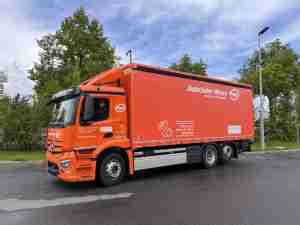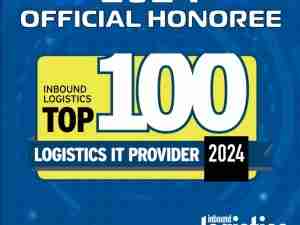Benefits of data sharing for independent freight forwarders
posted by AJOT | Jul 16 2015 at 04:19 PM | Logistics
The industry has long operated in data isolation, maintaining a veil of secrecy with supply chain partners. But the companies who do so are denying themselves the benefits of building a single, efficient global data flow. With today’s technologies, trusted partnerships can be achieved while keeping confidential commercial information securely segregated.
Let’s start by stripping away the secrecy. Everyone likes to think that no one else knows who their customers are and that they can prevent anyone from finding out. But realistically, consignee names are plastered all over bills of lading and other documents that are passed down the line. Your ‘secrets’ are not really very secret. So let’s move on to how positive sharing can turn into a win for everyone in the chain.
No matter which role you take, you’re operating in the most networked industry in the world. You can’t stand alone, even if you’re an independent freight forwarder. There are many parties that contribute to full service delivery along the supply chain. And then there are your end clients and internal systems for distribution, import, and export to consider.
By working together, rather than jealously keeping your own data to yourself, very real efficiencies can be achieved. A global network of independent freight forwarders doesn’t have to be a contradictory phrase.
With today’s affordable, cloud-based logistics applications, accurate and secure data can be passed like a baton. Automated electronic transfers bring you speed like never before, and being able to view every step of a consignment’s process with a single click brings you far reaching visibility.
Deploying accelerated data exchange can dramatically reduce freight movers’ shipment processing time. This can be achieved when your system automatically populates incoming data and you only need to add the details of your actions. Customers can even provide the initial request from their system, which then flows directly into yours, moving data confidentially and automatically through your supply chain. New information is added at every step rather than re-keyed from scratch.
Having an efficient data flow eradicates the labor-intensive, error-prone inefficiencies of matching email requests against phone messages, collating piles of dockets and compliance documents, printing off spreadsheets, and finally transcribing all this into your company’s processes. Instead of starting from the beginning based on imperfect details in an email, the shipment’s data, including weight, Bill of Lading, vessel, consignee, value, and more, is transferred directly to your system via the overseas agent.
And when the exporting agent sends data as routed cargo, then the charging structure can easily be included as collectible. Access rights safeguard commercial aspects. Data may not be so secret, but it can certainly be confidential.
Just imagine how this process could vastly decrease the amount of data re-entry in your organization. With vast reductions in operational costs and time, your business can be open to greater opportunity. Your skilled staff can spend time properly servicing current customers – retaining happy clients is the easiest way to build the business – or casting the net wider to find new clients or service specializations.
Independent freight forwarders are independent for a reason. When you’re about relationships first and transactions second, you can provide the personal touch that a segment of the marketplace is looking for. No matter what, though, customers will expect their boutique service providers to have the same capabilities as the large global forwarders.
I hear a lot of good things from independent operators who are confidently and confidentially working together with like-minded agencies around the globe in a single global data flow.
With the current subscription-based software offerings, you can have automated data transfer flows for the international movement of manifests – commercially secure under specific access rights – that allow you to act like a big company while remaining small. You win with significant productivity gains while maintaining your competitive edge in your local specialization.
Most of us would agree that 80 to 90 percent of freight forwarding activity is the same. It’s on the important final 10 to 15 percentage points that you stamp your unique offering - the reason why your customers choose your services over your competitors’. Because everyone wants the same thing, but in a different way, you need the flexibility to configure and tailor to specific requirements.
Obviously, the best results come from networks that operate from the same platform. But a wealth of developer understanding around the technical requirements of small, medium, and large logistics enterprises can provide integration links into disparate solutions. The exception here is for those companies that are running bespoke systems: understandably, they get left behind. The latest functionality – representing global, industry-wide experience and system operability – is best brought to the table by providers who build their core business around developing, testing, and implementing IT.









